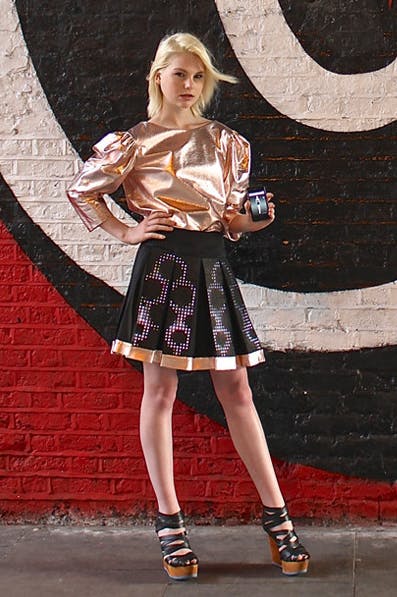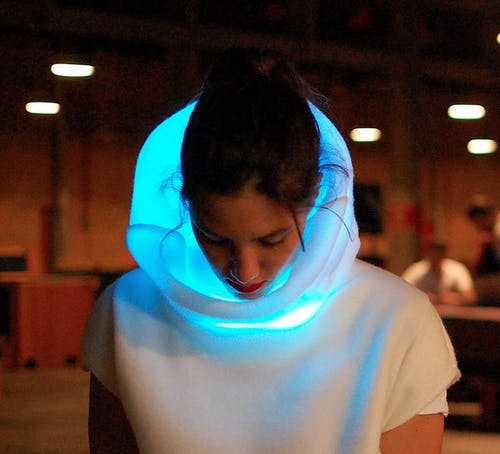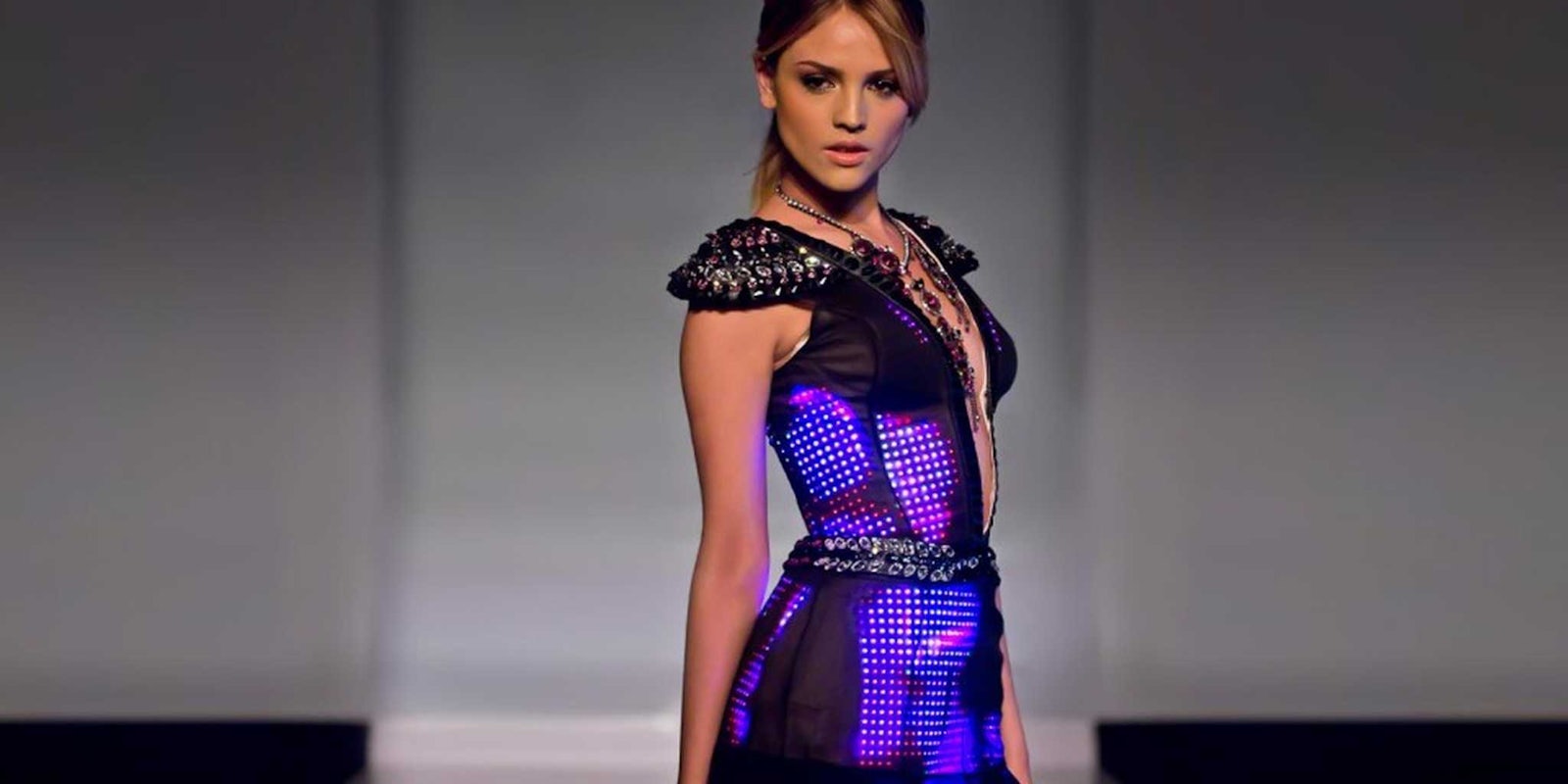It’s 2014 and we’re not all clad in matching shiny monochromatic space suits, so the most cliche ideas about future fashions haven’t come to fruition. But just because the industry has managed not to end up unimaginative utilitarian proletariat of jumpsuit-clad future-people doesn’t mean the apparel industry is taking advantage of technology like it could. After all, there should be an algorithm capable of eradicating crop tops. But we’re not there yet.
Then again, it’s not like fashion is ignoring tech. The market has attempted to integrate new technologies, with varying degrees of success: Even with Diane von Furstenberg’s approval, Google Glass remains inherently dorky, but Alexander McQueen’s digitally printed dresses from 2010 successfully encouraged other designers to embrace digital prints. What’s going down in couture, however, rarely translates to what most people pick up from the mall or shop for online.
Partly because it can be costly, many experiments integrating tech and fashion have happened in the haute couture fashion scene, while the most high-tech stuff people wear off of the runway tends to be whatever butt-lifting material Lululemon concocts in its dungeons. There’s clearly room for improvement, a compromise of sorts.
This gap is where companies like CuteCircuit come in. The London-based design house is gaining fame for its high-tech couture creations, but also because it’s experimenting with technologically advanced wearables meant for a wider audience.
“We like to see people wearing CuteCircuit everyday as well as for special occasions,” Francesca Rosella and Ryan Genz, CuteCurcuit’s co-founders, told me via email. The company’s haute couture inventions include costumes for Katy Perry with built-in lights syncronized to her music. They also made a “Twitter dress” that displays tweets based on hashtag recognition. Former Pussycat Dolls singer Nicole Scherzinger wore it in London:
Some of CuteCircuit’s ready-to-wear clothes are not quite as blingy as Scherzinger’s dress, but still come with plenty of built-in electronics. They use materials like LED lights, conductive ribbons and fibers, and tiny microelectronics to produce clothes that look totally normally—until you flip the switch and turn them “on.”
Rosella and Gentz are especially excited about some of the pieces from their recent show at New York Fashion Week, including the iMiniSkirt. The skirt is connected to an app CuteCircuit created, called Q. “Via the Q smartphone App the wearer can change the colour of their iMiniSkirt at any time, this is because the garments are made of Magic Fabric, a special fabric covered in thousands of microLEDs, designed and developed by CuteCircuit,” the designers explained. “Magic Fabric is perfectly smooth and comfortable like other fashion fabrics, but is also magical, as it can change color, play video (at 25 frames per second), [and] connect to the Internet and social media to display tweets in real time.”

The only downside of CuteCircuit’s impressive fashion: Even the ready-to-wear clothes are expensive. The iMiniSkirt, for example, retails for a whopping £3,750.00, or $6,308.25. Other items are much more affordable, but think Barney’s prices versus H&M; most items cost well over $100.
Of course CuteCircuit isn’t the only company exploring high-tech clothes. Joshua Hubert’s Pixadelic vest is similar to the idea behind the iMiniSkirt: The top flashes hundreds of tiny LED lights into custom-made patterns. Hubert even made a shirt into a Tetris game:
Cover Magazine recently highlighted several fashion businesses focusing on haptic clothing, or clothing the react to the human physiology or tactile movements. For instance Sensoree created a “Mood Sweater” with an illuminated collar: Unlike CuteCircuit’s clothes, you can see the technology at work here, since wearers place sensors on their wrists and a wire connects them to the top. The colors change according to the wearer’s “excitement levels,” and while that might not sound assuringly scientific, it certainly looks beautiful, like a modern mood ring. Light blue means zen tranquility, and if you see someone wearing the sweater with the collar lit up in purple, take heed: It means they’re aroused or excited. Sensoree has these sweaters available for pre-order.

Others are more interesting in experimenting with tech in clothing for the sake of function rather than form. OMSignal, for instance, offers a biometric men’s fitness line, with shirts that track activity, physiological stress, and fitness levels, like a sophisticated Fitbit woven into a workout tank.
However none of these options are exactly affordable. It’s not cheap to embed tech into clothes without looking totally clunky or obvious, and CuteCircuit’s more expensive pieces are also, not surprisingly, the best examples of how to marry fashion and technology in a way that doesn’t feel forced or gimmicky. They’re expensive for a reason.
It will take time for these smart clothes to also come with smarter prices. The most affordable wearable high-tech items are probably, at this point in time, vibrating panties. It’s nearly impossible to find a dress or coat with embedded electronics for under a few hundred dollars… but underwear is another story. At least, for now: Hopefully someday soon we can live in a world where clothig beyond electronic undergarments are affordable.
Photo via CuteCircuit
